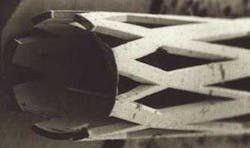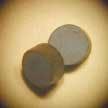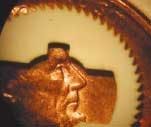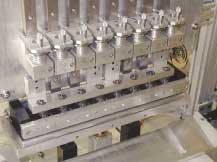Medical device manufacturing
The medical market in the United States is about as stable and healthy as any these days and apparently many laser companies are well aware of this fact. This is evidenced by the large number of laser manufacturers, service providers, system integrators, and component suppliers exhibiting at the medical device shows held several times per year at different venues around the country. There are some obstacles that need to be addressed before getting fully immersed into this market, but the rewards can be well worth the effort. Because the medical device community is constantly trying to make smaller, less-intrusive devices, lasers are an attractive means of attaining these goals.
First, let's discuss R&D and prototyping. In many cases it is clear from the beginning of an effort that if the product goes into full-scale production lasers will not be used as there are more economical methods of production that may require a significant investment in tooling. On the other hand, lasers, because of their flexibility, can be used during the product and process development stages because changes can be made easily through simple programming or set-up changes.
There are also applications for which no other traditional technology will accomplish the task. Some applications will never be viable because, even though lasers may be capable of doing a particular job, the economics do not work out. Other applications are sound both from a technical and a financial point of view. A good example is the routing or cutting of thin plastic films. When films become thinner than 100 microns, it is very difficult to press or stamp parts, and, in addition, the press or stamp edge quality and achievable tolerances are nowhere near what is possible with lasers. Consider plastic films like Mylar or Kapton. UV lasers can cut these materials into many intricate shapes with extremely good edge quality and in an economical fashion. Such films are used in a variety of medical applications such as flow regulators, fluid dynamics, and insulators.
Frequently, tooling is necessary either to do a job at all or to do it efficiently. With disposable medical devices, where the numbers can be in the millions of units per year, efficiently getting parts on and off the laser is as important as actual laser processing time. For example, because of the excimer laser's large and non-Gaussian beam, it is easy to geometrically split the laser beam into beamlets to process many parts at once. This technique minimizes one of the drawbacks of an excimer laser: the poor beam utilization efficiency, which in many cases can be only a few percent.
Examples of interest
An emerging application in the medical field involves wire stripping so that a wire (or wires) inserted into the body can apply current to a specific area. Excimer lasers can be compressed and collimated, then masked off, to form a stripe of varying length and energy density. This rectangular image can then be passed over the wires to remove the insulation. Stage motion can be used under the beam to scan the surface, or if the product is a cylinder, it can be spun on a rotary axis. Complete 360-degree stripping can be accomplished in one easy step using a retroreflector behind the wire. This will capture the excess beam, which has passed the wire, and redirect it back onto the part. In the end, an entire section of wire can be stripped in a single pass, which can be very cost effective. Similar results also can be obtained in some cases using a focused Gaussian beam and restoring over the area to be removed.
Metal stents are a big business area for laser processing. Companies such as Guidant and J&J have tens of machines, and frequently outside contract manufacturers who manufacture dozens of different designs using mostly pulsed Nd:YAG lasers. These devices need to be rigid enough to hold the tissue open, but flexible enough to be snaked through the body without causing tears or abrasions. New products also benefit from chemistry applied to the outer surface that promotes healing and prevents recurrences.
A problem when inserting a hard metal stent into the body is that, once it is in place, it is theoretically there forever. If there are later problems near the same area, this can necessitate surgery to remove the metal blockage. Biodegradable stents are now being investigated that will correct the initial problem, but will then dissolve over some finite time period after the walls are stabilized. This allows future work to be done without the necessity of removing the previously inserted metal object.
One bit of medical technology that has evolved over the past few years involves the use of angioplasty balloons to deliver drugs to the source of the blockage. By adding individual channels to the outside of a central balloon, those channels can be used to dispense drugs before, during, or after the process of inflating the balloon. By using an imaged circular mask, or even an array of circular images, a pattern can be imaged with extreme repeatability—on the order of microns. Adding a rotary tool to mount the balloons gives a degree of automation, which allows imaging these patterns extremely accurately around the circumference of the balloon. In this manner, peripheral drug flow with a variety of different spray patterns can be realized.
A big challenge in catheter drilling is keeping the tube motionless while being drilled. Mechanical positioning is complicated by limited amounts of heat expansion and physical motion as a result of ejected plasma/effluent, or even just being pulled away by either the weight of the catheter or coil tension. In the case of drilling, the chief concern is that the part does not move at all so you get a clean hole. In the case of marking, the chief concern is that the tube is properly aligned in the rotational axis, so the letters or graphics remain centered along the whole length. To make sure the part doesn't move in single spot drilling, a clamshell type approach can help: for instance, using two halves of a tool with a channel running down the center for the wire to sit in, as well as holes drilled in one or more sides to expose only the area to be drilled. When clamped together, the wire is held tightly, but the tool still gives access to the important areas.
A field poised to grow significantly over the next few years is manufacturing implants of various types. In order to be functional and minimally intrusive, these implants must be small and, furthermore, they must be very 'clean,' meaning smooth edges and no debris. Lasers easily fit this requirement for many materials being investigated. This is especially true when considering UV lasers, as the clean edges and minimal HAZ produced are ideal for implant environments. One type of implant is active, meaning that some condition is monitored and then a corrective action of some type is administered by the implant. The second type is passive in that a body function is monitored and this information is transmitted to a receiver, which is used to determine secondary corrective procedures. An interesting application is the monitoring of blood sugar using an implanted device that sends radio signals to a receiver worn around the wrist. No blood needs to be drawn and the digital information can be stored as a history file.
Populated printed circuit boards (PCBs) are used in conjunction with drug delivery devices so that some condition of the patient is monitored and drugs, typically of high value and potency, are delivered only 'on call' as opposed to a steady stream of delivery like, for instance, IV techniques. These devices can also take the form of electro-mechanical devices. Two good examples are also associated with blood sugar monitoring and insulin delivery. The diabetes market is probably the fastest-growing market in all of the medical industry. One reason for this is that the 'Americanization' of much of the world's daily diet means that a huge section of the human population that historically did not tend to have blood sugar problems is now more exposed with its changing diet. The other reason is that, as people grow older and die at an older age, diabetes has a chance to occur. Small PCBs are possible only using laser technology for drilling the microvias and in many cases for exposure of contact fingers and routing.
As opposed to the catheter drilling, where handling of the tubes can prove unwieldy, hard plastic pieces can be handled far easier. This allows rapid loading and unloading of parts into specialized tooling. Here is an example where splitting of an excimer beam into several beamlets can prove useful. Each of these beamlets can be sent to its own mask, focusing lens, and finally to individual parts in a pre-loaded cassette. In this manner, multiple parts can be drilled simultaneously using a single laser source. Depending on the spectral absorption of the plastic material, single beam sources like the frequency-tripled and -quadrupled lasers can also be used in a serial approach using rotary bowl feeders. The beauty of this technique is that 100-percent inspection also can be incorporated at one of the rotary feed stations.
Fluid dynamics also is just beginning to see a lot of activity. One can think of fluid flow as a basic DC electrical circuit. On a micro-scale, many interesting devices can be manufactured if techniques are available to make the small and clean features required. Lasers fit this bill well. Flow channels can be made in the exterior of materials using standard practices, but flow channels also can be made inside the material bulk using short-pulse lasers focused tightly inside the bulk.
The medical device market seems to be rapidly expanding and new opportunities are becoming available for laser vendors and service providers. This field looks to be one of huge growth and also stable volume. As new laser sources and techniques become available, they will definitely find a wide variety of applications in the disposable medical device field.
About the Author
Ron Schaeffer
Ron Schaeffer, Ph.D., is a blogger and contributing editor, and a member of the Laser Focus World Editorial Advisory Board. He is an industry expert in the field of laser micromachining and was formerly Chief Executive Officer of PhotoMachining, Inc. He has been involved in laser manufacturing and materials processing for over 25 years, working in and starting small companies. He is an advisor and past member of the Board of Directors of the Laser Institute of America. He has a Ph.D. in Physical Chemistry from Lehigh University and did graduate work at the University of Paris. His book, Fundamentals of Laser Micromachining, is available from CRC Press.
David Grossman
David Grossman is an application engineer at PhotoMachining (Pelham, NH).




